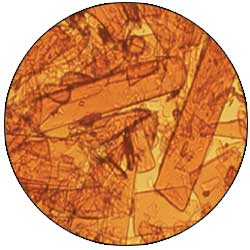

But why lutein?
A growing body of evidence indicates consumption of lutein, found abundantly in dark green leafy vegetables, may reduce the risk of eye diseases such as age-related macular degeneration and cataracts, and may also support long-term eye health. Other research suggests lutein’s antioxidant benefits help other body tissues, including the skin, breast and cervix. Researchers have estimated that the average American consumes just 2mg of lutein a day, while the majority of eye health studies suggest a consumption of a minimum of 6mg of lutein a day for better health. To bridge this gap in lutein consumption, consumers have the option of choosing dietary supplements or foods and beverages fortified with lutein.
For some time, purified lutein has been Generally Recognized as Safe (GRAS) in several beverage products including meal replacement drinks, ready-to-eat breakfast cereals, fruit juices and drinks, mixed vegetable juices, nutrition bars, soymilk and energy drinks. About six months ago, the first foods fortified with lutein debuted in grocery stores around the country. These industry firsts were Ensure® and Glucerna® meal replacement drinks and Sunsweet® Prune Juice +.
Newly added GRAS categories include egg substitutes, fermented milks and yogurt products. This presents dairy manufacturers with an opportunity to differentiate themselves from the competition.
Application considerations
Before considering a formulation change to include a nutrient such as lutein, manufacturers need to examine several variables. This is because there are many factors that contribute to the final cost of adding the new ingredient, as well as factors that will ensure optimal performance for the consumer when they eat lutein-fortified dairy foods. The two most critical issues are the possibility of any physical or organoleptic changes, such as color, taste, odor and texture, as well as any potential process losses of the nutrient. These issues need to be addressed before considering a formulation change.Preliminary applications research on the addition of lutein into yogurt products and fermented milk, for example, shows that fortification can be accomplished simply and economically. Kemin Foods applications research staff found that when 0.5mg of lutein is added to a standard serving of fermented milk (pH=4.0), nonfat yogurt or low-fat yogurt, there is no visual impact on finished product color. Shelflife tests also indicate that there are no changes in aroma, texture or mouthfeel. And the best news, after seven days of refrigerated storage, lutein content remained stable.
While specific manufacturers’ formulations need to be tested under their own proprietary manufacturing conditions, preliminary research is promising for companies ready to make the most of the market opportunities.
